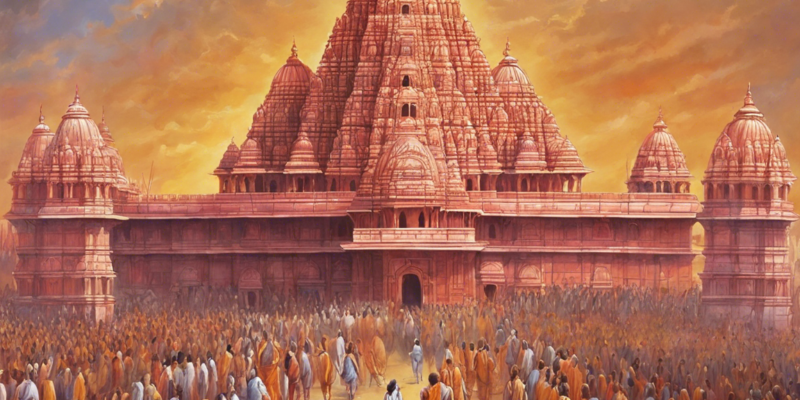
Significance of 22 Jan for Ram Mandir
On 22nd January, one of the most significant events in recent Indian history took place—the Supreme Court of India rejected multiple review petitions against its November 2019 verdict that awarded the disputed land in Ayodhya to Hindus for the construction of a Ram Mandir. This decision marked a monumental milestone in the centuries-old Ayodhya land dispute, which had been a contentious issue between Hindus and Muslims in India.
The Ayodhya Dispute: A Historical Background
The Ayodhya dispute revolves around the belief that the Babri Masjid in Ayodhya was constructed on the birthplace of Lord Ram, a revered deity in Hinduism. The dispute has its roots in the narrative that suggests a Hindu temple, believed to have been demolished during the Mughal era to make way for the mosque, should be rebuilt at the site. The demolition of the mosque in 1992 triggered nationwide communal riots and polarized communities along religious lines.
Legal Battle and the Verdict
After decades of legal battles and political tensions, the Supreme Court of India delivered a historic verdict on 9th November 2019, favouring the construction of a Ram Mandir at the disputed site while also ordering the allocation of an alternate five-acre plot for the construction of a mosque. The judgment emphasized the significance of maintaining peace and harmony among religious communities and upholding the secular values enshrined in the Indian Constitution.
22nd January Verdict
On 22nd January, the Supreme Court dismissed a batch of review petitions challenging its 2019 verdict, thereby confirming the allocation of the disputed land for the construction of the Ram Mandir. This decision signifies the final legal seal on the long-standing dispute and paves the way for the construction of a grand temple dedicated to Lord Ram at the disputed site in Ayodhya.
Impact and Significance
- Religious Harmony: The resolution of the Ayodhya dispute is seen as a significant step towards fostering religious harmony and coexistence among different communities in India.
- Political Ramifications: The verdict has political implications, as it has been a longstanding issue that various political parties have used to mobilize their support bases.
- Cultural Symbolism: The construction of the Ram Mandir holds immense cultural and emotional significance for millions of Hindus, who consider Ayodhya as one of the holiest sites in Hinduism.
- Legal Precedent: The legal resolution of the Ayodhya dispute sets a precedent for peaceful conflict resolution and upholding the rule of law in similar contentious matters.
FAQs (Frequently Asked Questions)
- What was the Ayodhya dispute all about?
-
The Ayodhya dispute pertained to the contested ownership of a religious site in Ayodhya, where Hindus claimed the Babri Masjid was built on the birthplace of Lord Ram.
-
Why is the construction of the Ram Mandir significant?
-
The construction of the Ram Mandir holds immense cultural and religious significance for Hindus, as the site is believed to be the birthplace of Lord Ram.
-
What was the Supreme Court’s verdict on the Ayodhya dispute?
-
The Supreme Court of India ruled in favour of the construction of a Ram Mandir at the disputed site in Ayodhya and allocated an alternate five-acre plot for the construction of a mosque.
-
How does the resolution of the Ayodhya dispute impact religious harmony in India?
-
The resolution of the Ayodhya dispute is a step towards fostering religious harmony and peaceful coexistence among different religious communities in India.
-
What are the political implications of the Ayodhya verdict?
- The Ayodhya verdict has political ramifications, as it has been a contentious issue used by various political parties to mobilize their support bases over the years.
In conclusion, the significance of 22nd January lies in the final legal closure of the Ayodhya dispute, paving the way for the construction of a Ram Mandir at the contested site. This landmark decision carries immense cultural, religious, and legal implications, and it marks a crucial milestone in India’s journey towards peaceful coexistence and harmonious interfaith relations.
